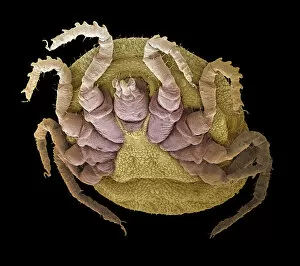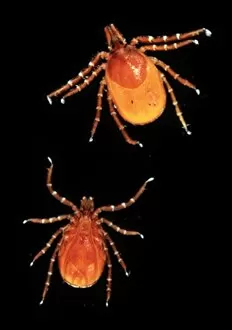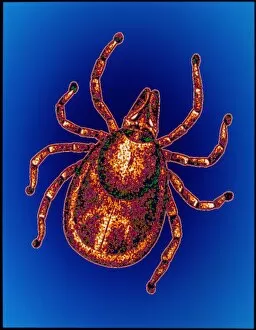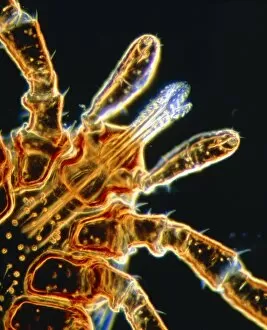Sheep Tick Collection
"Sheep Tick: A Tiny Parasite with Big Consequences" In this captivating image titled "Melon, 1833-39 (coloured engraving)" from Curtis British Entomology Plate 142
For sale as Licensed Images
Choose your image, Select your licence and Download the media
"Sheep Tick: A Tiny Parasite with Big Consequences" In this captivating image titled "Melon, 1833-39 (coloured engraving)" from Curtis British Entomology Plate 142, we catch a glimpse of the notorious sheep tick. Also known as Ixodes ricinus, this minuscule arachnid has become a cause for concern due to its potential role in transmitting Lyme disease. With its distinctive SEM (scanning electron microscopy) view, the sheep tick reveals intricate details that are otherwise invisible to the naked eye. Its segmented body and eight legs are perfectly adapted for clinging onto hosts such as sheep or other mammals. The presence of these ticks can have severe implications for both animals and humans alike. As carriers of Lyme disease, they pose a significant health risk. In fact, another stunning micrograph showcases the head of an infected tick responsible for spreading this debilitating illness. Despite their small size, these pests can wreak havoc on livestock populations and outdoor enthusiasts who frequently venture into wooded areas where ticks thrive. The light micrographs further emphasize their prevalence and highlight just how common they are in certain regions, and is crucial to remain vigilant when spending time outdoors and take necessary precautions against these blood-sucking parasites. Regularly checking yourself and your pets for ticks after being in grassy or forested areas is essential to prevent any potential infections. So next time you come across a seemingly harmless insect like the sheep tick, remember its hidden dangers lurking beneath its tiny exterior. Stay informed about Lyme disease prevention methods while appreciating nature's intricacies from afar.










